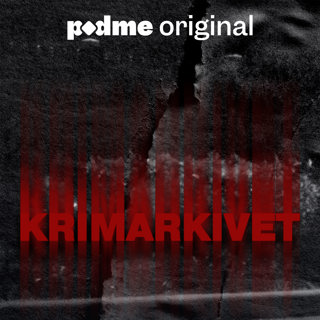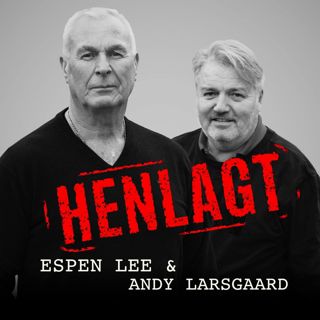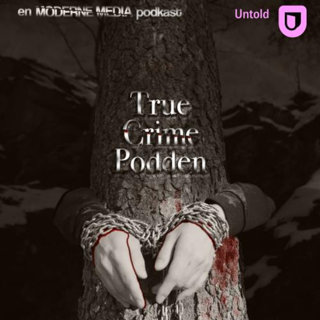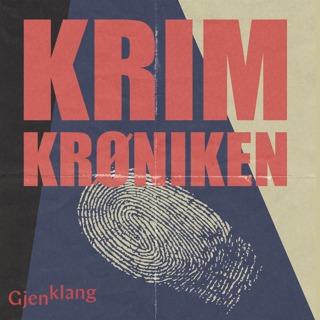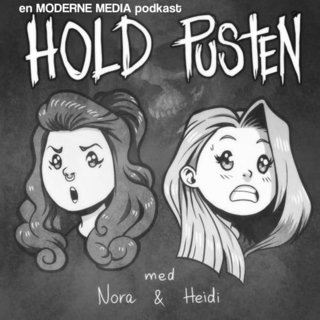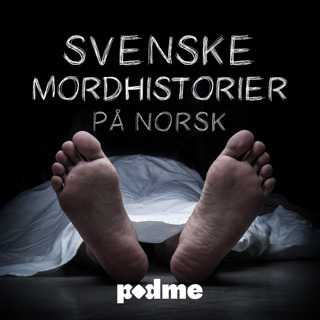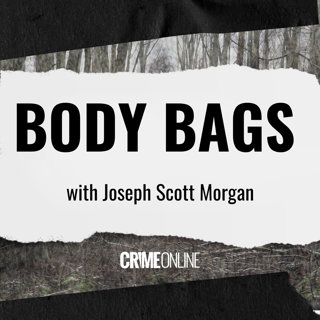
Murder in the Margins: A Tale of Love, Betrayal, and Comic Book Obsession Gone Wrong
In this episode of the Body Bags we delve into the chilling case of Elizabeth Capaldi, who was murdered by her husband, Stephen Capaldi. Capaldi, 57, has been sentenced to 22 to 44 years in prison for the murder of his wife, Elizabeth "Beth" Capaldi, 55, in October 2022. Incriminating evidence was found on his cellphone, including internet searches on how to get away with murder. Hosts Joseph Scott Morgan and Dave Mack discuss the unusual factors that contributed to the crime, including infidelity and a comic book obsession, the meticulous research Stephen conducted before the murder, the initial police response to Beth's missing person report, filed by her daughter Emma, and how inconsistencies during police interviews can raise red flags and lead to a suspect's downfall. Time-codes: 00:00 - Introduction. 01:07 - Overview of Beth Capaldi's murder case. 02:00 - Joseph asks Dave about his experience with comic books. 03:10 - Joseph's childhood love for comic books. 05:00 - Driving factors in Stephen Capaldi's case: infidelity and comic book obsession. 06:20 - Alternative ways Stephen could have ended his marriage. 08:15 - Sinister research Stephen did prior to Beth's disappearance. 11:50 - Emma Capaldi involves the police after talking to her father. 14:50 - JoScott explains how investigators approach missing person cases. 16:30 - Significance of observing behavior patterns in missing person's cases. 17:40 - Police questioning spouses and detecting deviations from their stories. 20:11 - Suspicious internet searches made by Stephen Capaldi. 33:10 - Joseph describes the intimate nature of the murder. 35:10 - Methods researched to dispose of Beth's body. 36:20 - Bloody aftermath in the basement and timeline of murder. 38:30 - Emotional impact of the crime scene. 45:15 - Outro.See omnystudio.com/listener for privacy information.
27 Apr 202344min

Unraveling the Gannon Stauch Case | A Forensic Odyssey
Gannon Stauch, an 11-year-old boy from Colorado, was found dead nearly two months after he was reported missing by his stepmother, Letecia Stauch. Gannon was initially reported as a runaway, but was later classified as a missing/endangered person. Surveillance footage revealed Letecia leaving with Gannon and returning without him, raising suspicions, and then Gannon's body was found in Florida. His stepmother now faces multiple charges, including first-degree murder. In this episode of Body Bags, hosts Joseph Scott Morgan and Dave Mack discuss the timeline of the case, from Gannon's disappearance in Colorado Springs to the discovery of his body in a suitcase in Florida, the search warrants and investigation process in Gannon's bedroom, the challenges faced by the medical examiner when examining the body, and determining the cause of death. Time-codes: 00:00 - Introduction. 01:40 - Overview of Letitia Stauch's ongoing trial. 03:55 - Timeline of Gannon's disappearance and investigation. 05:25 - Discovery of Gannon's body in Florida. 08:00- Difficulty in determining postmortem interval and medical examiner's ability to ascertain information. 10:10- Blood detection methods at crime scenes and investigating scenes with cleansers used. 14:20 - Role of forensic pathologists in death investigations and inspecting a child's bedroom for foul play. 17:15 - Search warrant limitations in a residence and police walkthrough. 19:35 - Blood evidence found in Gannon's bedroom and challenges faced by the medical examiner. 21:50 - Establishing identification and cause of death in Gannon's case. 24:10 - Shared jurisdiction and forensic pathologist's expertise in tropical environments. 27:40 - Establishing a timeline of Gannon's death and managing emotions during trial testimonies. 31:00 - Forensic pathologist's clinical and objective testimony and Gannon's injuries. 33:30 - Presentation of Gannon's injuries in court and quantifying drug levels in decomposed bodies. 34:25 - Testing for substances in decomposed bodies, including maggots. 35:45 - Medication found in Gannon's system and detailing his injuries. 37:30 - Differentiating between lacerations and sharp force injuries and interpreting wounds on decomposed bodies. 39:20 - Importance of medical examiner's experience. 39:35 - Outro.See omnystudio.com/listener for privacy information.
25 Apr 202339min

A Shot in the Dark: Investigating Lincoln's Assassination and the Chilling Conspiracy | Part 2
In part one of this two-part series on Body Bags hosts Joseph Scott Morgan and Dave Mack take listeners through the assassination of President Abraham Lincoln and its aftermath. They describe the chaos at Ford's Theater, the attending physicians' struggles as they assessed Lincoln's condition with limited medical knowledge and tools, the removal of Lincoln's body, and the irony of increased security after the assassination. They also delve into the autopsy process, highlighting the physicians' extensive experience and the challenges they faced. Time-codes: 00:20 - Start of show. 01:35 - John Wilkes Booth's actions in the theater. 02:00 - Immediate response to the shooting. 02:35 - Lincoln's condition when the surgeon arrived. 03:15 - Initial confusion among the audience. 04:00 - Booth's calculated timing for the shooting. 05:30 - Surgeon realizes Lincoln's gunshot wound location. 05:55 - Limitations of medical knowledge and tools. 07:40 - Lincoln stops breathing and has dilated pupils. 08:10 - Surgeon removes clot, Lincoln breathes again. 09:20 - Difficulty transporting Lincoln to the White House. 09:55 - Physicians try to locate the lead ball in Lincoln's head. 11:30 - Attempt to drain blood and reduce intracranial pressure. 12:00 - Lincoln's death at 7:30 a.m. 13:50 - Lincoln remains unconscious throughout the ordeal. 16:40 - Removal of Lincoln's body from the boarding house. 17:15 - Absence of security and irony of increased security. 18:00 - Lincoln's tendency to dismiss security. 18:40 - Lincoln's body conveyed to White House for autopsy. 19:55 - Handsaw used to open Lincoln's skull. 21:10 - Delicate nature of dissecting the brain. 22:15 - Autopsy challenges: lack of electricity, reliance on touch. 23:00 - Physicians' extensive experience in dealing with trauma. 29:40 - Modern gunshot wound examination process. 30:30 - Role of x-rays in understanding bullet trajectories. 31:15 - Autopsy confirms nothing could have saved Lincoln. 32:55 - Limitations of 1800s medical treatments. 33:30 - John Wilkes Booth's autopsy. 34:50 - Physician's anger and resentment towards Booth. 35:30 - Booth's body relocation before returning to family. 36:05 - Outro.See omnystudio.com/listener for privacy information.
20 Apr 202336min

A Shot in the Dark: Investigating Lincoln's Assassination and the Chilling Conspiracy | Part 1
In part one of this two-part series on Body Bags we delve into the assassination and autopsy of President Abraham Lincoln. Hosts Joseph Scott Morgan and Dave Mack analyze the character and motivations of John Wilkes Booth, the layout of Ford's Theater, and the negligent behavior of John Parker, assigned to protect the president. They provide a fascinating explanation of the Philadelphia Deringer's firing mechanism, including its unique preloading process and firing sequence as well as going into Booth's meticulous planning, highlighting his knowledge of the play's comedic timing, Lincoln's potential focus on the orchestra pit, and the painstaking preparation involved in using the Deringer. Throughout this captivating episode, listeners uncover the chilling details and lasting impact of one of the most infamous moments in American history. Time-codes: 00:25 - JoScott’s surprise at visiting presidential assassination locations. 01:30 - Description of Ford's Theater and the assassination scene. 02:20 - Introduction of Lincoln's assassination and autopsy topic. 06:10 - Discussion of access to the president during Lincoln's time. 07:10 - How did Booth gain access to Lincoln's box at Ford's Theater? 08:45 - Lincoln's well-publicized attendance at the theater. 10:35 - Comparison of past and present presidential security measures. 11:10 - John Parker, the inept officer assigned to protect Lincoln. 13:40 - Background on John Wilkes Booth and his Southern cause support. 16:00 - Long-lasting impact of Lincoln's assassination on the country. 18:15 - Specifics of the weapon used by John Wilkes Booth. 21:35 - Importance of caliber and limitations of Booth's weapon. 23:40 - Preloading the Philadelphia Deringer and its hammer mechanism. 24:55 - Comparison of the Deringer's firing sequence to modern weapons. 26:20 - Demonstration of the Deringer's firing sequence and sound. 27:10 - Proximity of Booth to Lincoln when he fired the weapon. 27:50 - Booth's understanding of the play's comedic timing and assassination planning. 29:40 - Discussion of Booth's planning and escape plan. 30:30 - Process of loading the Derringer and importance of seating the bullet properly. 32:15 - Please join us next time for part two!See omnystudio.com/listener for privacy information.
18 Apr 202332min

The Gudino Enigma: Dismantling a Drug Trafficker's Murderous Web
Episode Summary: In this episode of Body Bags we delve into a baffling triple homicide case with multiple murder scenes and explore the backgrounds of the victims and suspect, Elias Gudino, who has a history of drug trafficking, and consider potential motives for the murders. Hosts Joseph Scott Morgan and Dave Mack discuss the challenges of kidnapping, restraining, and controlling multiple victims, as well as the significance of the chosen dumping grounds. They examine forensic details, such as rigor mortis and postmortem lividity, to determine the crime scene and the sequence of events. Shownotes: 00:20 - Introduction to a triple homicide case. 01:22 - Overview of the triple homicide, including bound, gagged, and shot victims. 04:00 - Speculation on whether one individual could carry out this crime spree and comparisons to other multiple homicide cases. 05:25 - The challenge of controlling, restraining, and transporting multiple victims as a single perpetrator. 07:05 - Introducing the suspect, Elias Gudino, and examining his background, including drug trafficking past. 08:05 - Roadway access and its importance in this case, along with crime scene locations and their potential significance. 09:50 - Forensics of the case and insights on where the crime began, postmortem lividity, and rigor mortis. 12:15 - Coordination when investigating multiple crime scenes and commonalities between them. 13:05 - The ages of the victims and possible connections between Gudino and the victims. 20:00 - Exploring where the crime began and how forensics can provide answers. 22:10 - How rigor mortis and algor mortis can be indicators in the investigation. 27:05 - Timeline for a body to become flaccid again and how it can be a useful clue for investigators. 29:45 - Were the victims at the crime scene all night or were they dumped just before the call came in? 30:45 - The limited illumination at the crime scene and how darkness plays a role in the perpetrator's actions. 31:15 - Different materials used for restraining the victims, types of knots, and the type of gag used on the victims. 32:40 - Examining casings and projectiles to link crime scenes to specific weapons. 33:45 - Questioning the perpetrator count and crime sequence 33:55 - OutroSee omnystudio.com/listener for privacy information.
13 Apr 202333min

Sex, Deception, and Murder: The Chilling Story of Shaye Groves and the Brutal Death of Frankie Fitzgerald
In this episode of "Body Bags," we unravel the harrowing story of Shaye Groves, a woman consumed by her obsession with serial killers and ultimately implicated in the brutal murder of her boyfriend, Frankie Fitzgerald. Delving into the chilling fascination that permeated her life and relationships, the hosts uncover the disturbing evidence that led to the gruesome crime. Hosts Joseph Scott Morgan and Dave Mack explore the challenges investigators face when encountering an unfamiliar crime scene and the unsettling environment they discover including a macabre collection of serial killer images and the couple's history of violent, videotaped sex acts. They discuss Shaye Groves' possible premeditation of the murder, her manipulation and blackmail of previous partners through recorded sex acts, and her meticulous execution of the crime, such as using bleach to clean up the scene. Shownotes: 00:20 - Intro to case. 02:10 - Dave Mack gives background and overview of case. 04:10 - What impact did having serial killer images in her home have on Shay Groves and her mindset? 05:25 - The disturbing nature of Shay Groves' obsession and how it relates to the crime and her life. 07:10 - Shay Groves and Frankie Fitzgerald's romantic relationship and Shaye's controlling nature. 09:25 - Challenges investigators face when entering an unfamiliar crime scene and disturbing evidence and how their first impressions can impact their investigation. 11:50 - The couple's history of violent sex acts captured on video and how this escalated. 14:00 - The use of bleach in morgue cleanups and how the smell of bleach can linger, connecting it to the crime scene. 15:10 - Possibility of Shea Groves planning the murder and the use of bleach to clean the crime scene. 19:50 - Shea's obsession with serial killers, dark imagery, and the types of knives used in the murder. 21:55 - JoScott talks about the differences between single-edged and double-edged knife wounds. 24:40 - The catastrophic loss of blood that led to Frankie's death and Shaye’s possible motives and methods during the attack. 26:40 - Determining if any wounds were inflicted post-mortem and whether the crime was a torture event or a dark fantasy acted out by Shaye. 28:54 - Outro.See omnystudio.com/listener for privacy information.
11 Apr 202329min

Blood, Shovels, and Antlers: Decoding a Disturbing Crime Scene
Levi Axtell, a Minnesota man, murdered elderly Lawrence V. Scully, whom he accused of stalking his young daughter. Scully was convicted in 1979 of sexually assaulting a 6 year old girl and went to prison for 2 years. When carrying out the crime, Axtell used unconventional weapons in his attack – a shovel and a large moose antler – leaving a gruesome crime scene behind. In this episode of Body Bags, forensics expert Joseph Scott Morgan and Dave Mack discuss the perplexing case of a brutal attack involving a shovel and moose antlers. They explore the difficulties faced by forensic investigators in differentiating between injuries caused by these unconventional weapons, while also examining the chaotic nature and rapid timeline of the assault, as well as the psychological aspects driving the attacker to use such odd weapons, and how the investigation unfolded in this bizarre and gruesome case. Show Notes: 0:00 - Intro 1:05 - Background and overview of case 2:22 - Moose antlers being used as weapons. 3:55 - Levi Axtell and Lawrence Scully had been in conflict for years and Axtell eventually got an order of protection from him. What does that mean and what does it take to get an order of protection? 6:45 - Finding registered sex offenders in your area. 8:00 - Axtell got an order of protection from Scully which was then dismissed leading to heightened frustration and alertness. 10:10 - Scully’s criminal history. 13:05 - Axtell’s previous offenses. 13:50 - How did the whole situation escalate? 14:25 - Imagine a scenario where a blood-covered man confesses to murder at a police station. 15:30 - The role of 911 in reporting crimes. 16:40 - The police must ensure the safety of the suspect and others in the vicinity. 19:40 - Start asking questions. 21:10 - The suspect is agitated, how does that affect his interaction with the police? 22:30 - The use of a shovel in this case and how that may be used as evidence by Axtell's defense. 24:25 - Has JoScott Seen people use garden tools as weapons? 27:00 - How do forensic experts analyze and decipher complex crime scenes with widespread blood, defensive injuries, and splatter? 31:35 - How do forensic experts distinguish wounds from unusual weapons? 36:00 - How does the unique shape and weight of a moose antler influence its use as a weapon and the resulting injuries compared to other blunt force weapons? 39:10 - How the short time frame and frenzied nature of the attack may impact how police or forensic experts approach and investigate the crime scene. See omnystudio.com/listener for privacy information.
6 Apr 202341min

A Pink Hammer's Dark Secrets: The Mysterious Death of Leon Hignite
In this episode of "Body Bags," Joseph Scott Morgan and Dave Mack delve into the chilling case of 76-year-old Leon Hignite, who was found abandoned in his home with gruesome injuries. They explore the forensic details of blood spatter patterns and analyze the severity of Leon's injuries, the challenges faced by the medical team, and the disturbing circumstances surrounding the incident. Time Codes: 0:00 - Introduction 01:17 - Overview and background 04:28 - Dave questions how the blood on the ceiling and wall could have resulted from Leon's supposed fall in the bathroom. 05:07 - Leon's limited ability to communicate due to his blindness and hearing impairment. 06:17 - The autopsy reveals that Leon sustained at least 30 blunt force impacts to his head. 07:42 - Paramedics find Leon in a deplorable state on the bedroom floor, surrounded by blood and waste. 09:46 - Leon’s feelings of helplessness and hopelessness. 10:10 - Leon is found after three days. 10:41 - Leon's medical condition, age, blindness, and other health issues. 11:04 - The police arrive to serve a search warrant and discover the house set on fire. 11:56 - Medical intervention needed for Leon's head trauma. 13:14 - Carol Hignite's claims she gave Leon ice chips to hydrate him. 14:39 - Were the injuries Leon sustained typical of a fall? 16:10 - The forensic implications of overlapping contusions and fractured areas. 18:05 - The pink hammer. 20:47 - The forensic challenges of blood being found on the hammer. 22:14 - The differences between blood spatter from impact vs. cast-off. 24:01 - Blood velocities and their relation to various weapons. 25:30 - What happened those 3 days before 911 was called? 27:40 - OutroSee omnystudio.com/listener for privacy information.
4 Apr 202328min






